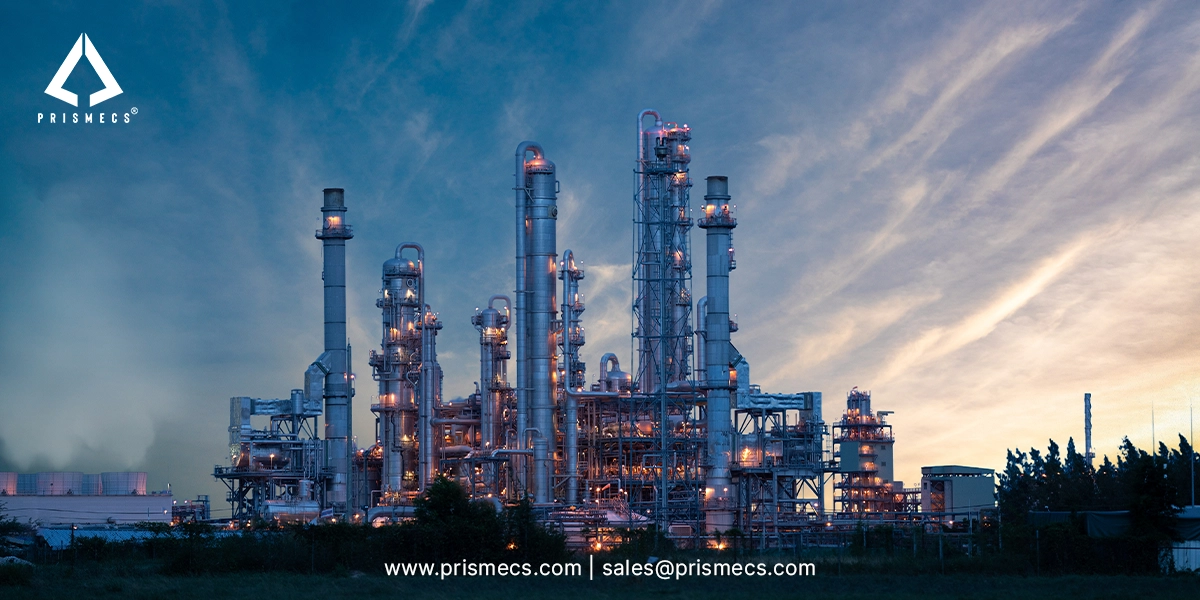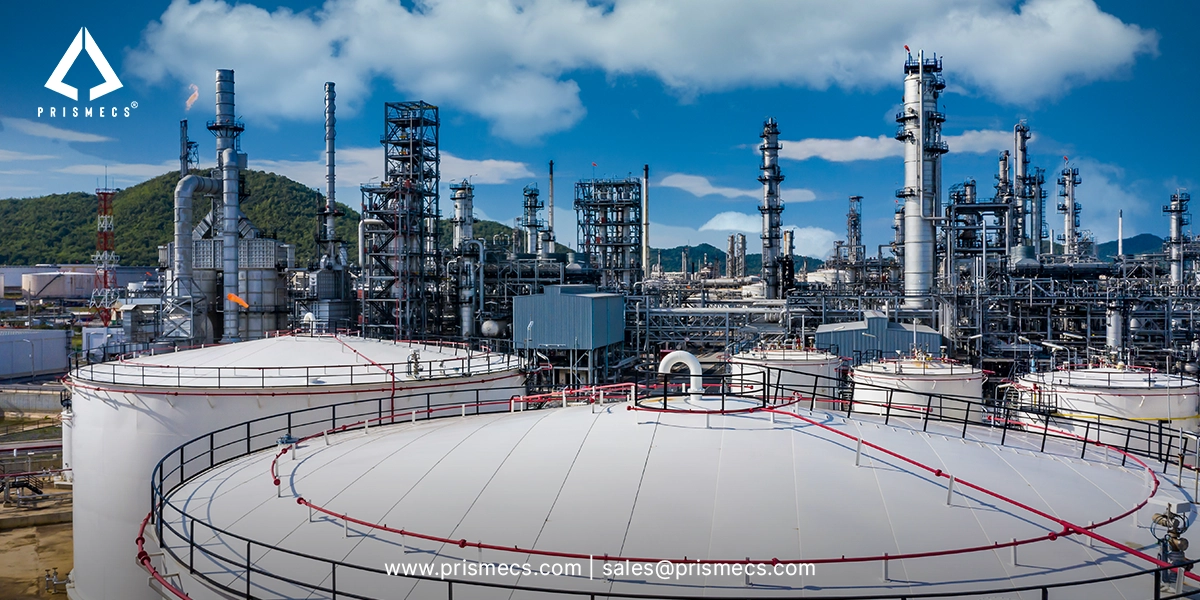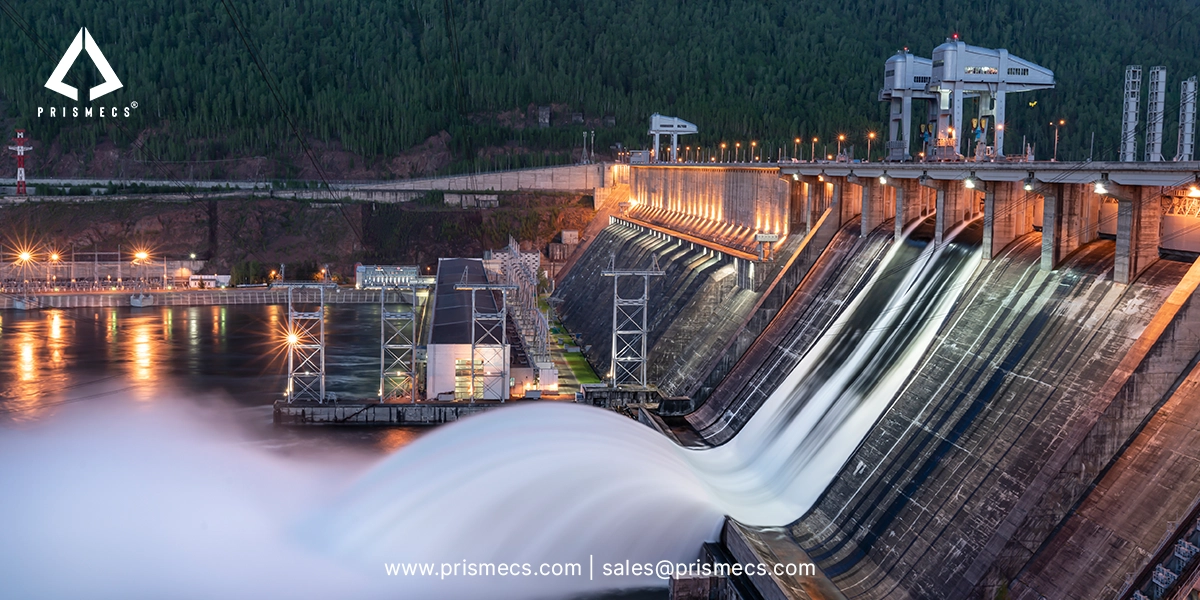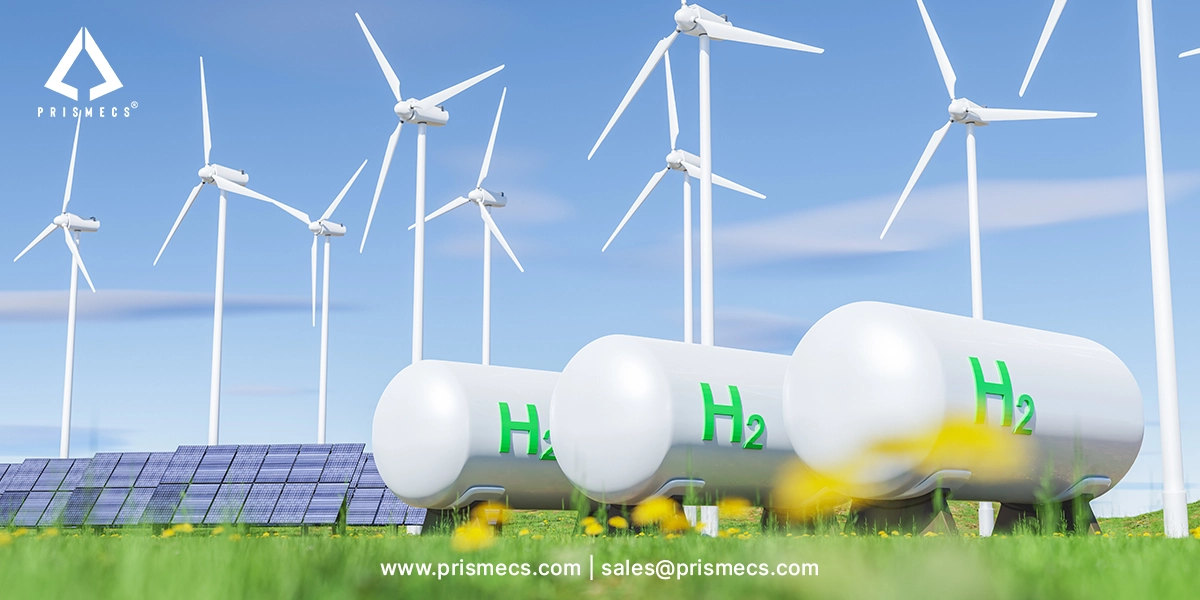
Demand is growing for reliable and efficient power generation systems. Industries, cities, and homes rely on a steady supply of electricity. Powering a manufacturing plant, a utility-scale operation, or an entire city requires a deep understanding. Understand the various types of power generation systems and their operational principles.
This understanding enables us to meet energy needs while minimizing environmental impact. This guide examines the primary types of power, their energy sources, technologies, and best practices for achieving optimal efficiency.
What Is a Power Generation System?
A power generation system is a network of equipment and processes that convert one form of energy into electricity. It utilizes various energy sources, including fossil fuels, renewable technologies, and nuclear methods, to meet demand. The system comprises the primary energy source, conversion technology, transmission infrastructure, and, in some cases, energy storage solutions.
In the global energy landscape, power generation systems range from small-scale residential setups to massive utility-scale facilities. Efficiency, cost, and environmental impact determine the viability of each approach.
Types of Power Generation Systems
Different power generation systems use different energy sources and technologies. Choosing the right type of power generation system depends on factors like cost, scalability, location, and sustainability goals.
About 18% of power produced in the US comes from water, wind, and solar energy. The US is the world’s second-largest emitter of greenhouse gases.
Solar Power Systems
Solar power harnesses energy from the sun using photovoltaic panels or solar thermal systems. Solar panels, composed of solar cells, directly generate electricity from sunlight in photovoltaic systems. Solar thermal systems concentrate sunlight to produce steam, which drives turbines.
Benefits
Renewable, low greenhouse gas emissions, and scalable from small rooftops to large solar farms.
Applications
Residential homes, commercial facilities, and utility-scale solar plants.
Efficiency
Install panels at optimal angles and utilize high-efficiency modules to maximize energy efficiency. Integrate energy storage to provide electricity during periods of cloudiness or at night.
Thermal Power Plants
Thermal power plants generate electricity by burning fossil fuels, such as coal, oil, or natural gas. The heat from combustion produces steam, which drives steam turbines connected to generators.
Benefits
Proven technology, continuous power supply, and adaptable to demand fluctuations.
Applications
Large-scale electricity production for cities and industries.
Efficiency
Upgrade boilers and utilize combined cycle systems. Switch to cleaner fuels such as natural gas to reduce greenhouse gas emissions.
Gas Turbine Power Plants
Gas turbines operate by burning fuel (usually natural gas) to produce hot gases that spin turbine blades. The turbines drive generators to produce electricity. Combined cycle plants utilize both gas and steam turbines to achieve higher efficiency.
Benefits
Quik start-up times, lower emissions compared to coal, and high efficiency in combined cycle mode.
Applications
Peak load generation, backup power, and utility-scale grids.
Efficiency
Maintain turbine components regularly, optimize fuel-air ratios, and recover waste heat for steam generation.
Hydroelectric Power Plants
Hydroelectric power plants use the energy of flowing or falling water to turn turbines. The mechanical energy spins a generator, creating electricity. They offer a reliable, renewable energy source with low greenhouse gas emissions during operation.
Benefits
Renewable, low operating costs, and minimal emissions.
Applications
Utility-scale baseload power, rural electrification.
Efficiency
Maintain dam infrastructure, optimize water flow control, and upgrade turbine technology to improve energy output.
Nuclear Power Plants
Nuclear power plants utilize nuclear fission to generate heat, which in turn produces steam to drive turbines. The process releases no direct greenhouse gas emissions. It makes a clean form of energy for large-scale electricity generation.
Benefits
High energy output, reliable baseload power, and low emissions.
Applications
Continuous power generation for industrialized regions and utility-scale needs.
Efficiency
Regular reactor maintenance, efficient heat exchangers, and advanced safety systems to maximize uptime.
Geothermal Power Plants
Geothermal power plants tap into the Earth’s internal heat to produce steam and drive turbines. Heat comes from underground reservoirs of hot water or steam. These systems provide a steady, low-emission energy source with high reliability and minimal land use.
Benefits
Renewable, consistent output, and small land footprint.
Applications
Regional power supply in geothermal-rich areas.
Efficiency Tips
Monitor resource sustainability, utilize binary cycle technology, and maintain integrity for long-term operational stability.
Key Components of an Efficient Power Generation System
An efficient power generation system requires more than just a reliable energy source. It depends on well-integrated components, optimized processes, and proper maintenance.
Energy Source Selection
Selecting the right type of power source is the foundation of efficiency. Renewable options such as solar power, hydroelectric power plants, and geothermal power plants offer long-term sustainability. Nuclear power provides high-capacity baseload energy. Fossil fuels can remain in the mix if paired with carbon capture and cleaner combustion technologies.
Conversion Technology
The core of any power generation system is the conversion of raw energy into mechanical and then electrical energy. This might involve steam turbines, gas turbines, or photovoltaic modules. Advanced designs, such as combined cycle plants or high-efficiency solar cells, improve conversion rates.
Energy Storage Solutions
Energy storage helps balance the supply and demand for electricity. Batteries, pumped hydro storage, and thermal storage systems ensure uninterrupted power during peak demand. These systems ensure uninterrupted power when renewable sources aren’t producing.
Grid Integration
Efficient electricity generation requires seamless integration into the transmission and distribution network. Smart grids and real-time monitoring enable the management of fluctuating loads, minimizing energy losses.
Emission Control Technologies
Minimizing greenhouse gas emissions is a priority in modern power plants. Carbon capture systems, scrubbers, and low-NOx burners reduce pollutants while maintaining high output. Implementing these technologies helps meet regulatory standards and supports environmental sustainability goals.
Efficiency Practices in Power Generation Systems
Implementing best practices ensures maximum performance and cost-effectiveness. This includes regular equipment maintenance, real-time performance monitoring, and optimization of fuel usage. Upgrading outdated components and integrating automation can significantly reduce energy losses. Power plants prioritize efficiency and reduce operational costs. They extend the lifespan of their equipment. They minimize their environmental impact.
Regular Maintenance
Turbine blade inspections, boiler cleanings, and panel cleaning prevent energy loss. Scheduled upkeep extends the equipment's lifespan and reduces the risk of unexpected downtime.
Load Management
Adjusting output based on demand avoids overproduction and reduces fuel waste. This strategy also helps balance grid stability and improve overall system reliability.
Upgrades and Retrofits
Modernizing turbines, boilers, and control systems enhances efficiency. These improvements can also reduce emissions and qualify systems for updated compliance standards.
Monitoring and Automation
Smart sensors and AI-driven analytics enable real-time performance optimization. They enable predictive maintenance and faster response to system anomalies.
Environmental Considerations
While power generation is essential, its environmental footprint cannot be ignored. Traditional fossil fuel systems contribute significantly to greenhouse gas emissions, whereas renewable systems, such as solar power and hydroelectric power plants, produce minimal emissions. Nuclear power generates no carbon emissions during operation but requires careful waste management.
Strategies for reducing environmental impact include:
- Shifting to low-emission energy sources.
- Using high-efficiency turbines and heat recovery systems.
- Incorporating carbon capture in thermal power plants.
- Expanding energy storage to support renewable adoption.
The Future of Power Generation Systems
The future points toward cleaner, smarter, and more flexible power generation systems. Trends shaping this future include:
Hybrid Systems
Combining solar power, wind, and energy storage for continuous output, ensuring reliability even during fluctuating weather conditions. These systems optimize resource utilization, provide stable power output, and can reduce dependence on fossil fuels. They also help lower the overall carbon footprint of power production.
Advanced Nuclear Power
Small modular reactors (SMRs) offer safer, scalable nuclear energy, with the potential to reduce construction time and overall costs. Their compact design also allows deployment in remote or space-limited areas. Using pressurized steam and generating steam, SMRs can support industrial processes that require large amounts of energy.
Smart Grids
AI-driven distribution for efficient load balancing and fault detection, enabling real-time adjustments to optimize energy delivery. They also facilitate the integration of renewable sources and improve grid resilience during periods of peak demand or outages. Smarter power grids ensure efficient transmission of power production across regions.
Low-Carbon Gas Turbines
Hydrogen-ready turbines provide a cleaner form of energy production, supporting the transition toward net-zero emissions. These turbines generate a flexible power output, balancing intermittent renewable energy sources and ensuring a reliable electricity supply for industrial processes.
Industries are increasingly investing in utility-scale renewable projects, thereby reducing their dependency on fossil fuels while maintaining competitive electricity generation costs.
Choosing the Right Power Generation System
Selecting the best power generation system for your needs involves evaluating:
Energy Source Availability
Is solar radiation, water flow, geothermal heat, or fuel supply consistent in your region? Evaluate seasonal variations and long-term resource stability to ensure uninterrupted power production.
Capacity Requirements
Match plant size and output with demand forecasts to ensure optimal allocation of resources. Also consider potential future expansion to accommodate growing energy needs and increased demand for energy.
Budget and ROI
Consider installation, operation, and maintenance costs alongside long-term savings. Factor in incentives, subsidies, and tax benefits to enhance the financial feasibility of your chosen power grids or plants.
Environmental Goals
Choose systems that align with emission reduction targets. Opt for technologies with minimal ecological impact and strong sustainability credentials, reducing the carbon footprint of both residential and industrial processes.
At the Bottom Line
An efficient power generation system blends the right type of power, advanced technology, and smart operational strategies to deliver reliable electricity generation. From solar power farms to nuclear power plants, each system has strengths and limitations. The goal is to maximize output while minimizing greenhouse gas emissions and operational costs.
Global energy demand is increasing across all industries and households. Renewable energy sources drive the next generation of efficient power plants. Conventional thermal power plants achieve higher performance through continuous upgrades. Innovative energy storage solutions shape advancements in sustainable and efficient power generation.
Partner with Prismecs for Efficient Power Generation Systems
Prismecs supports businesses, industries, and utilities in developing high-performance, sustainable power generation systems. These systems meet both present and future demands. We combine technical expertise with cutting-edge solutions. We help you produce energy more efficiently. We reduce environmental impact. We will ensure a stable electricity supply for years to come. To avail of our services, call us at +1(888) 774-7632 or email us at sales@prismecs.com.
Tags: Power Generation System Type Of Power Solar Power Hydroelectric Power Plants Thermal Power Plants Geothermal Power Plants Nuclear Power Plants Electricity Generation Power Generation Nuclear Power
recent posts

Petrochemicals
6 minutes read
Petrochemical EPC Services for Complex Plant Projects
Petrochemical EPC services are designed to manage complex plant projects, brownfield integration, strict regulations, and tight schedules.

Renewables
5 minutes read
How Renewable Energy Systems Work Efficiently
Discover how renewable energy systems work efficiently to provide affordable, zero carbon energy, overcome storage challenges, and power for a sustain...

I and C Services
7 minutes read
Expert Commissioning Services for Safe, Efficient Operations
Learn how expert commissioning services support safe, efficient, and reliable energy operations across complex industrial and power systems.

Green Hydrogen
7 minutes read
Green Hydrogen Plant Technology Guide
Discover how a green hydrogen plant works, its key technologies, and its role in clean energy. Explore solutions for scalable, carbon-free hydrogen pr...